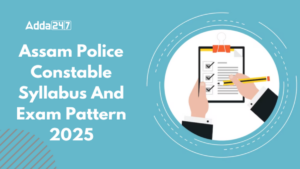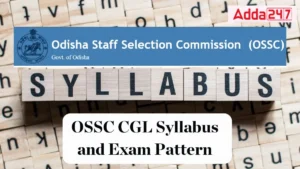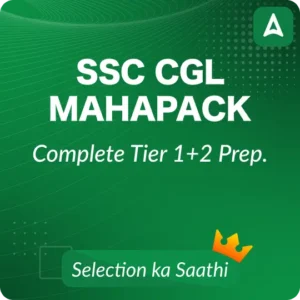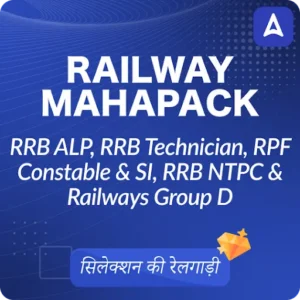The Punjab Subordinate Service Selection Board has announced to recruit various posts, including Naib Tehsildar, Inspector Audit and Other posts. Aspirants preparing for the PSSSB Inspector Audit Exam should be aware of the official syllabus and exam pattern details. The PSSSB Audit Inspector Syllabus and Exam Pattern 2025 has been announced on the official website.
Aspirants should go through the official PSSSB Audit Inspector Syllabus and follow the topics mentioned in it to clear the exam. The written exam consists of two parts i.e Part A and Part B. Here, we have shared the official PSSSB Inspector Audit Syllabus and Exam Pattern 2025 PDF in this article.
PSSSB Audit Inspector Syllabus 2025
The Aspirants who are planning to prepare for the PSSSB Recruitment 2025 Inspector Exam should be aware of the detailed Inspector Audit Syllabus and detailed exam pattern. For the convenience of the aspirants here we have shared the detailed subject wise syllabus. However, the official syllabus for this post has not been released yet. Till then, candidates can check the previous year’s syllabus, which has been provided in the article.
PSSSB Inspector Audit Syllabus and Exam Pattern 2025
Candidates preparing for the PSSSB Inspector Audit Exam should be aware of the syllabus and exam pattern. The PSSSB Inspector Syllabus and Exam Pattern helps students to plan their preparation schedule as per the exam standards. Candidates can check the key details about the Punjab Inspector Audit Exam shared below:
| PSSSB Audit Inspector Syllabus and Exam Pattern 2025 | |
| Recruiting Organisation | Punjab Subordinate Services Selection Board |
| Vacancies | 135 |
| Post Name | Inspector Audit |
| Category | Syllabus |
| Status | Released |
| Exam Duration | 02 hours |
| Exam Mode | Objective Type |
| Maximum Marks | 120 |
| Negative Marking | -1/4th (-0.25) |
| Official Website | https://sssb.punjab.gov.in/ |
PSSSB Audit Inspector Subject Wise Syllabus 2025
The Punjab SSSB has announced the most-awaited Audit Inspector Syllabus on the official website. Candidates should be aware of the tentative/indicative syllabus (which may vary to some extent) for the written examination mentioned in the official website. The exam includes two parts i.e Part A and Part B. Here, we have shared a detailed Part A and Part B syllabus.
| Part A Punjab Audit Inspector Syllabus 2025 | |
| Subjects | Important Topics |
| General Knowledge & Current Affairs |
Polity, Environment, Economy, Science & Tech, History (incl. Freedom Struggle), Sports, Cinema, Literature, Geography
|
| Punjab History & Culture | Physical features of Punjab and its ancient history. Social, religious and economic life in Punjab. Development of Language & literature and Arts in Punjab, Social and culture of Punjab during Afgan/Mughal Rule, Bhakti Movement, Sufism, Teachings/History of Sikh Gurus and Saints in Punjab. Adi Granth, Sikh Rulers, Freedom movements of Punjab. |
| Logical Reasoning & Mental Ability | Logical reasoning, analytical and mental ability.(05 Marks) Basic numerical skills, numbers, magnitudes, percentage, numerical relation appreciation. (03 Marks) Data analysis, Graphic presentation charts, tables, spreadsheets. (02 Marks) |
| Punjabi | ਸ਼ੁੱਧ-ਅਸ਼ੁੱਧ, ਸ਼ਬਦਜੋੜ, ਅਗੇਤਰ ਅਤੇ ਪਿਛੇਤਰ, ਸਮਾਨਾਰਥਕ/ਵਿਰੋਧੀਸ਼ਬਦ, ਨਾਂਵ, ਪੜਨਾਂਵ ਅਤੇ ਕਿਰਿਆ ਦੀਆਂ ਕਿਸਮਾਂ ਤੇ ਸਹੀ ਵਰਤੋਂ, ਲਿੰਗ ਅਤੇ ਵਚਨ, ਪੰਜਾਬੀ ਅਖਾਣ ਤੇ ਮੁਹਾਵਰੇ, ਅੰਗਰੇਜੀ ਤੋਂ ਪੰਜਾਬੀ ਅਨੁਵਾਦ ਅਤੇ ਬਹੁਤੇ ਸ਼ਬਦਾਂ ਦੀ ਥਾਂ ਇੱਕ ਸ਼ਬਦ ਆਦਿ। |
| English | Basic Grammar, Subject and Verb, Adjectives and Adverbs, Synonyms, Antonyms, One Word Substitution, Fill in the Blanks, Correction in Sentences, Idioms and their meanings, Spell Checks, Adjectives, Articles, Prepositions, Direct and Indirect Speech, Active and Passive Voice, Correction in Sentences, etc. |
| ICT |
Basics of Computers, Internet & Networks, MS Office Tools (Word, Excel, PowerPoint, Spreadsheet usage)
|
The Part B of Punjab Inspector Audit Syllabus 2025 includes the following:
| Part B Punjab Audit Inspector Syllabus 2025 | |
| Subjects | Important Topics |
| Financial Accounting | Meaning, Scope and Importance, Branches of Accounting, Accounting Concepts and Conventions, Double Entry System, Preparation of Journal, Subsidiary Books including Cash Book. Ledger, Trial Balance, Preparation of Final Accounts of Sole Traders and Partnership Firm. Distinction between Capital and Revenue items, Depreciation Methods and Accounting including AS-6. Bank Reconciliation Statement. Accounts relating to Partnership: Admission, Retirement and Death of a Partner, Dissolution of Partnership, Amalgamation of Firms, Sale of Firm to a Company, Gradual Realisation of Assets and Piece Meal Distribution. Consignment Accounts: Accounting treatment, including journal and ledger in the books of the consignor and consignee. Joint Venture: Methods of maintaining Joint Venture Accounts. E-Accounting: Meaning, Features, Advantages and Disadvantages of Computerised Accounting, Financial Accounting Package Tally. ERP 9.0: Introduction, Phases of implementation, Configuring Tally, Accounts Management with TALLY.ERP 9.0 Package: Accounts Masters including eating and altering vouchers, Accounts transactions and preparing Trial Balance and Final Accounts. Corporate Accounting as per the Companies Act, 2013: Issue, forfeiture and reissue of shares; Redemption of preference shares; Issue and redemption of debentures; Issue of bonus shares and right shares; Underwriting of shares and debentures; Accounts of underwriters. Final Accounts of companies including computation of managerial remuneration and disposal of profit; Profit prior to and after incorporation; Consolidated Statements of holding companies with one subsidiary only. Amalgamation, absorption, merger and reconstruction, Accounting for amalgamation of companies as per Indian Accounting Standard, Accounting for internal reconstruction. Liquidation Accounts. Management Accounting Management Accounting: Meaning, Definition, Nature, Objectives, Scope and Functions of Management Accounting, Management Accounting and Financial Accounting, Management and Cost Accounting; Role of Management Accounting in decision making; Management Accounting Tools; Advantages and Limitations of Management Accounting. Financial Statements: Concept, Nature, Objectives of Financial Statements, Types of Financial Statements; Limitations of Financial Statements; Analysis and Interpretation of Financial Statements: Techniques of Financial Statements Analysis; Comparative Statements, Common size statements, and Trend analysis. Ratio analysis : Meaning and significance of Ratio analysis, Classification and interpretation of Ratios- Liquidity ratios, Turnover ratios, Solvency ratios and Profitability ratios; Advantages and Limitations of Accounting Ratios. Fund Flow Analysis : Concept of Funds, Sources and Uses of Funds, Managerial uses of Funds Flow Analysis, Statement of Changes in working Capital, Funds Flow Statement. Cash Flow Analysis : Indian Accounting Standard – 3, Cash Flow Statement. |
| Cost Accounting | Meaning, Objectives, Advantages and Limitations of Cost Accounting, Importance of Cost Accounting to Business Concern. Cost concepts and classification; Preparation of cost sheet. |
| Accounting for Material | Concept, objectives and techniques of Material Control, Accounting and Control of Purchase, Storage and Issue of Materials; Methods of pricing material issues; Treatment of Material Losses. Accounting for Labour : Labour cost control procedure; Labour turnover; Idle time and overtime; Methods of wage payment; Time and piece rates; Essentials of a good wage plan Incentive schemes: Taylor’s differential piece rate system, Halsey plan, Rowan Plan; Fringe benefits. Accounting for Overheads: Meaning, Classification of Overheads: Element-wise, Functional and Behavioral; Allocation and Apportionment of overheads; Absorption of overheads; Determination of overhead rates Under and over absorption and its treatment; Treatment of special items of overheads like interest, depreciation, packing expenses, carriage expenses, machinery erection, tools, R&D, advertisement etc. CVP Analysis: Introduction, Assumptions and Uses; Break-Even Analysis: BreakEven Point, Margin of Safety and Maintaining a desired level of profit; Graphical presentation of CVP Relationship. |
| Marginal Costing and Management Decision |
Marginal Costing vis-à-vis Absorption Costing; Marginal as a tool for decision making; Marginal Costing Techniques; Marginal Cost and Product Pricing;
Change of Product Mix; Make or Buy Decisions; Exploring new markets; Shut Down Decisions. Budgeting for Profit Planning and Control: Meaning of Budget and Budgetary control Objectives; Merits and Limitations; Types of Budgets; Preparation of Functional Budgets; Fixed and Flexible Budgeting; Control ratios; Zero Base Budgeting; Performance Budgeting; Responsibility Accounting. Standard Costing and Variance Analysis: Meaning of Standard Cost and Standard Costing; Advantages and Application; Variance analysis: Material, Labour and Overhead Variances (two-way analysis). |
Punjab Audit Inspector Exam Pattern 2025
The Punjab Audit Inspector Exam will be conducted in OMR mode i.e offline, featuring 120 multiple-choice questions. The Exam paper is divided into two parts i.e Part A and Part B. Each question carries 1 mark. Candidates should go through the Punjab Audit Inspector Syllabus and Exam Pattern and prepare for the exam. The exam pattern includes
- Negative marking of -0.25 for each incorrect answer
- The duration of the exam is 2 hours
| Punjab Inspector Audit Exam Pattern 2025 | ||||
| Part | Subjects | Questions | Marks | Duration |
| A | General Knowledge, Current Affairs, Punjab History & Culture, Logical Reasoning & Mental Ability, Punjabi, English, ICT | 40 | 40 | 120 Minutes |
| B | Questions from Subject-Specific Syllabus (Accounting, Costing, Management, Finance etc.) | 80 | 80 | |
| Total | 120 | 120 | ||




 Assam Police Constable Syllabus And Exam...
Assam Police Constable Syllabus And Exam...
 OSSC CGL Syllabus 2026, Check Revised Ex...
OSSC CGL Syllabus 2026, Check Revised Ex...
 Assam Police SI Syllabus And Exam Patter...
Assam Police SI Syllabus And Exam Patter...




 Adda247 Job portal has complete information about all Sarkari Jobs and Naukri Alerts, its latest recruitment notifications, from all state and national level jobs and their updates.
Adda247 Job portal has complete information about all Sarkari Jobs and Naukri Alerts, its latest recruitment notifications, from all state and national level jobs and their updates.



